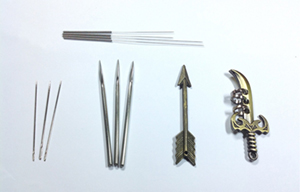
Am Fam Physician. 2016;94(12):1002
It was my first time receiving acupuncture treatment for a stomachache. When I saw the needles, I felt inexplicable nervousness and fear. The tips of those tiny needles looked so sharp through the light. The luster of cold metal reminded me of weapons from ancient times, such as arrows and swords. I had seen a movie that had a scene where people used acupuncture needles as instruments of torture. It's incredible that I feared those tiny needles, even though I was trying to be brave.
I felt sore and heavy on my belly and legs during the treatment. After a few minutes, I had a growing sense of faintness with dizziness, nausea, and a cold sweat. My physician said that fainting is a phenomenon of syncope, and she withdrew all the acupuncture needles immediately. After drinking a cup of warm water and resting, I recovered in a few minutes.
Since then, I have not had the courage to do acupuncture therapy again. I have a fear of needles, and it was terrible to experience syncope while undergoing treatment.—s.z.

COMMENTARY
The phenomenon of fainting during acupuncture was first mentioned in the ancient Chinese medicine book Huangdi Neijing, which scholars date between the late Warring States period (475 to 221 BCE) and the Han dynasty (206 BCE to 220 CE). This reaction to acupuncture is familiar in Western contexts as needle phobia. Needle phobia can be a true phobia or a vasovagal response, which can be so severe that the patient begins to fear the debilitating effects of syncope almost more than the needles themselves. Recent systematic reviews have found the following interventions to be effective for needle phobia in children: distraction, hypnosis, and cognitive behavior therapy. In adults, interventions have not been as thoroughly studied, but the following are recommended: breathing techniques, applied muscle tension, and exposure. Hypnosis has been recommended in managing vasovagal responses to acupuncture, or using alternatives to needles, such as laser technology.
